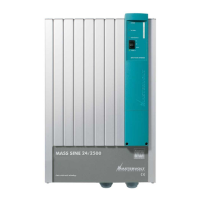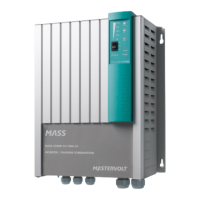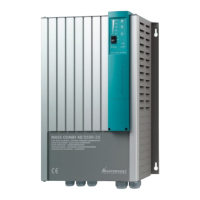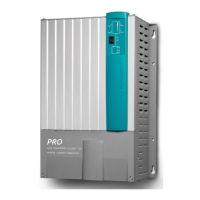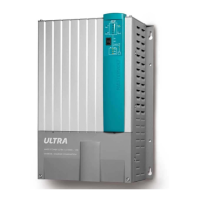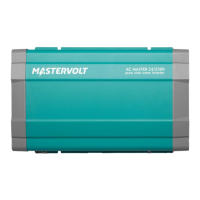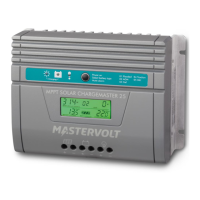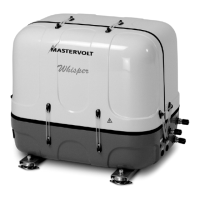INSTALLATION
34
March 2000 / MASS Sine 12/500/ EN
8.5 CONNECTING
Before beginning to connect the wiring,
make the AC and DC distribution volta-
ge-free.
8.5.1 Connecting the AC wiring and earth
wiring
General:
The inverter is protected against overload and short
circuit, so it is not necessary to install a fuse in the
output of the inverter.
IMPORTANT!
For safe installation it is necessary to:
• connect the earth (PE) and neutral
(N) of the inverter output to the central
ground;
• insert a RCCB (earth leakage) switch
of 30mA in the inverter output.
Check whether the voltage from the
inverter is the same as the connected
equipment.
The earth wire offers protection only if
the inverter cabinet is connected to the
earth. Connect the inverter's earth ter-
minal (at the right hand side of the AC
terminal block) to the hull or chassis.
For connecting the MASS Sine 12/500:
Switch off the inverter. On the left hand side below
the handle is the IEC socket to where the AC load
must be connected (see fig. 4).
8.5.2 DC wiring
Keep the cable length as short as possible, this will
keep the system efficiency as high as possible. The
recommended minimum size of the battery cables is:
12V
cable thickness 25 mm
2
The recommended length is a maximum of 6 meters.
When longer cables are required, use thicker cables.
When possible, use coloured (red and black) battery
cables. If this is not possible, mark the cables with
red and black isolation tape or heat shrink sleve.
8.5.3 Battery cable connections
The Mastervolt Service Centers have all accessories
available, like battery terminals and supply cables in
all sizes. Keep the cable connection between batte-
ries and inverter as short as possible (maximum 6
meters). Connect the black negative battery cable to
the negative connection bolt (right) and the red
positive battery cable to the positive bolt (left) of the
inverter. Cut the cables to the right length and fix, if
necessary, connect cable clamps to both ends. Con-
nect the negative cable to the negative battery pole
and the positive cable via the inverter fuse to the
positive red pole. See the connection diagram in fig.
4.
CAREFUL !
Reversing positive and negative will
cause major damage to the inverter.
This damage is not covered by the gua-
rantee.
CAREFUL !
Too-thin cables and/or loose connec-
tions can cause dangerous overheating
of the cables and/or terminals. There-
fore tighten all connections well, in
order to limit as far as possible transis-
tion resistance. Use DC cables of the
correct size.
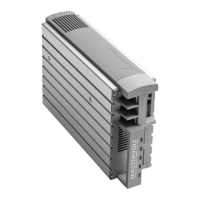
